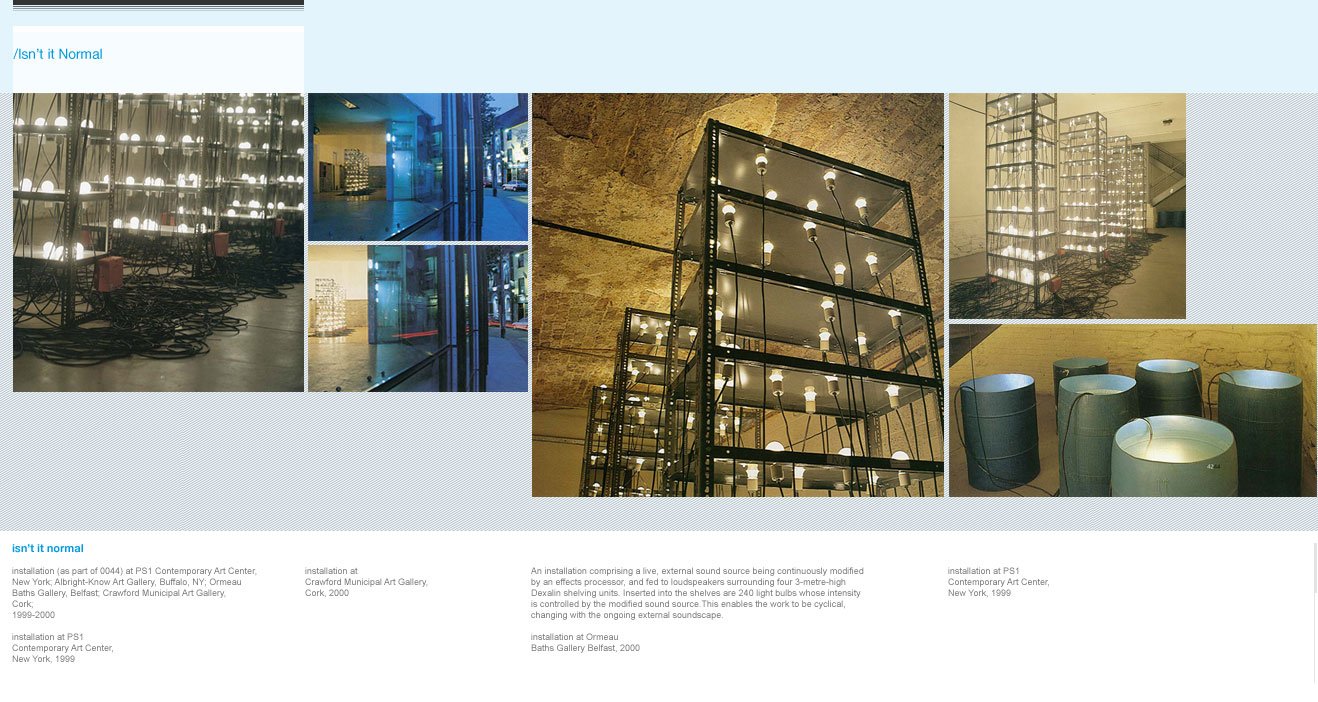









Press
Art in Focus: Andrew Kearney – Mechanism
Artist’s unsettling installations underline the implicit strangeness of everyday encounters with objects, places and materials
Sat Apr 20 2019 - 05:00
What is it?
A detail of Mechanism, a dynamic sound and light installation by Andrew Kearney.
How was it done?
The external component of Mechanism is a large mirror-surfaced mandala, intended as "a portal to the inside of the gallery". It monitors and processes on conditions in Emmet Place, including sounds and movements.
Inside, a suspended, 8m light and sound assembly processes and alters – in accordance with an algorithmic process – the external data. There are two other works in the space: a huge tree trunk, swathed in AstroTurf is continually in motion, dragged along the floor, and a mirrored orb spins on a high wire. Disorientated? If not, you will be.
Where can I see it?
Mechanism is at the Crawford Art Gallery, Emmet Place, Cork until May 26th, crawfordartgallery.ie. There have been previous iterations of the work at The Dock in Co Leitrim and the Centre Culturel Irlandais, Paris
Is it a typical work by the artist?
Kearney's works differ significantly from each other, but share enduring preoccupations. An interactive link between inside and out is a hallmark of his installations. He has not generally been prescriptive about interpretation and meaning, and usually suggests that the work happens in the space of engagement with the viewer: it is up to the viewer to draw the various elements together and derive a meaning.
Kearney was born in Limerick and first studied art there, going on to Chelsea in London and a prestigious Barclay’s Young Artist Award, followed by other accolades. In an interview with Aoife Mac Namara he noted that his approach to making art was coloured by the fact that, as he grew up, he felt the way he experienced the world was at odds with the conventional norm. In Chelsea he felt cast as a “leprechaun . . . queer, Irish, dyslexic. A joker.”
That dynamic correlation between inside and out allows for much possibility for metaphor. Individual pieces have used specific structures including attic, greenhouse and fortress, as well as other architectural forms, all entailing levels of visibility, or invisibility, and surveillance. They are enclosures that contain bodies, or the prototypical body, but they might also represent the body as a restless amalgam of the internal and the external. Measurement, monitoring and control also recur as features and motifs.
Kearney’s use of industrial materials (electric cables, corrugated steel, for example) and devices (computers and computer programmes, light bulbs, sensors, digital clocks, video cameras, microphones, often in large multiples), processing information as we encounter them, can lend a slightly ominous edge to the environments he creates.
We are unsure who – us? – or what – our movements, words? – are being monitored and towards what ends. A level of unease, even anxiety, is a common feature, and the transfer of information from outside to inside, reinforcing the idea of an installation as a being, specifically a being trying to register and process information about its immediate environment, but without the anchor of familiarity.
– https://www.irishtimes.com/culture/art-and-design/visual-art/art-in-focus-andrew-kearney-mechanism-1.3862344?fbclid=IwAR0FTdjzToTRbxbEPTSz1Mhoud0zyO8aTm4zkDg3eNXLQPP1btPTQehIblk
